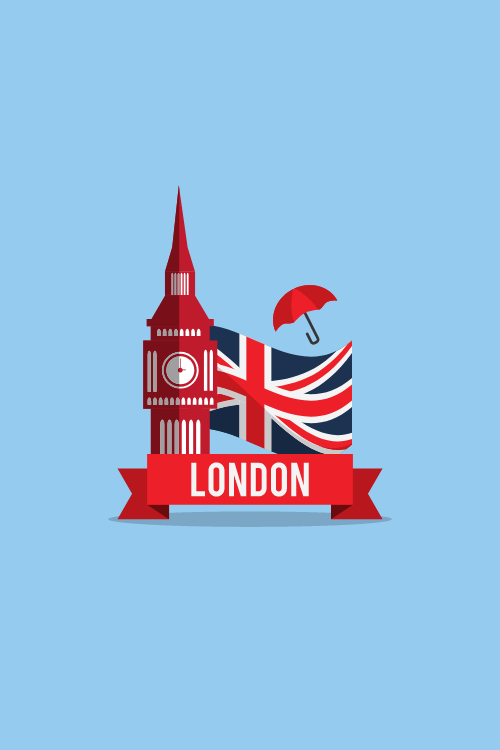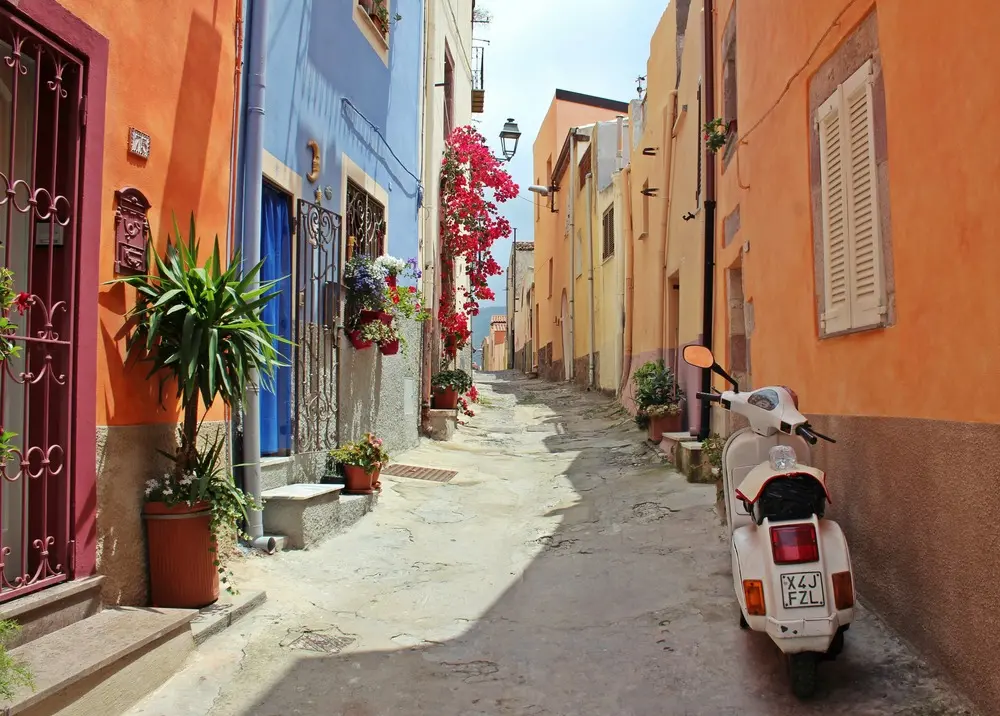Travel
Planning a Trip to Italy (2024 Guide)
Why Italy is a Top Travel Destination
Italy is a top travel destination that has captivated visitors for centuries with its rich history, stunning art and architecture, delicious cuisine, and breathtaking landscapes.
From the iconic cities of Rome, Florence, and Venice to the picturesque regions of Tuscany, the Amalfi Coast, and Cinque Terre, Italy offers a diverse array of experiences for every type of traveller.
Let’s get started…
Decide When to Go and Set Your Budget
Best Times to Visit Italy
When planning a trip to Italy, one of the first decisions you’ll need to make is when to go. The best time to visit Italy depends on your preferences, budget, and the activities you have in mind.
Peak season in Italy is from June to August when the weather is warm and sunny, but this also means larger crowds and higher prices.
If you’re looking to avoid crowds and save money, consider travelling during the shoulder season, which is April to May or September to October. During these months, the weather is still pleasant, but there are fewer tourists, and prices for accommodations and flights are generally lower.
| Season | Months | Pros | Cons |
|---|---|---|---|
| Spring | April to May | – Mild weather – Fewer crowds – Lower prices | – Some attractions may have limited hours |
| Summer | June to August | – Warm weather – Long days – All attractions open | – Crowds – High prices – Hot temperatures |
| Fall | September to October | – Mild weather – Fewer crowds – Lower prices – Harvest season | – Some attractions may have limited hours |
| Winter | November to March | – Low prices – Few crowds – Christmas markets | – Cold weather – Some attractions closed – Shorter days |
Setting Your Budget
Another crucial aspect of planning your Italy trip is setting a realistic budget. The cost of a trip to Italy can vary greatly depending on factors such as the time of year you travel, the length of your stay, and the destinations you choose to visit.
When creating your budget, consider expenses such as:
- Flights to Italy
- Accommodations (hotels, vacation rentals, etc.)
- Transportation within Italy (trains, rental cars, buses)
- Food and drinks
- Activities and attractions (museum tickets, guided tours, etc.)
- Travel Insurance
If you’re travelling to Italy on a budget, consider staying in smaller towns or cities, like Bologna or Verona, rather than the more popular and expensive destinations like Rome or Venice.
You can also save money by booking accommodations with kitchens so you can prepare some meals yourself, and by taking advantage of free walking tours and other low-cost activities.
Staying Connected While Travelling (And Avoiding Global Roaming Data Costs)
While you have video calling, SIM cards, international phone cards, etc. eSIM cards are the easiest way to get instant data wherever you travel to in Italy.
What is an eSIM?
An eSIM, or embedded SIM, is a digital SIM card that is built directly into your device. Unlike traditional physical SIM cards, an eSIM can be activated and configured remotely, without the need to visit a store or swap out physical cards.
Why Choose an eSIM for Your Trip To Italy?
- Convenience: With an eSIM, you can activate your data plan before even arriving in Italy. No need to waste precious vacation time searching for a store or navigating language barriers. Simply purchase your eSIM online, activate it, and you’re ready to go as soon as you land.
- Cost-effective: eSIM plans often offer more competitive rates compared to traditional roaming charges or buying a local SIM card. You can choose a plan that fits your needs and budget, whether you need just a few gigabytes for basic browsing or a larger data allowance for streaming and heavy usage.
- Dual SIM Capability: Many newer smartphones support dual SIM functionality, allowing you to keep your home SIM active for calls and texts while using an eSIM for data. This means you can stay reachable on your usual number while avoiding expensive roaming fees.
- Easy to Manage: With an eSIM, you can manage your plan through an app on your phone. You can easily top up data, switch plans, or cancel your service as needed, all with just a few taps.
Check out our eSIM’s for Italy.
Choose Your Destinations
Popular Cities and Regions in Italy
Italy is home to a wealth of incredible destinations, from world-famous cities to picturesque coastal regions and charming small towns. When planning your Italy itinerary, consider which places best align with your interests and travel style. Some of the most popular cities in Italy include:
- Rome: Known for its ancient ruins, like the Colosseum, and Vatican City.
- Florence: The birthplace of the Renaissance, famous for its art and architecture.
- Venice: A unique city built on canals, known for its romantic atmosphere.
- Milan: A global fashion capital, home to the stunning Duomo Cathedral.
- Naples: Renowned for its delicious pizza and nearby archaeological sites like Pompeii.
In addition to these cities, Italy is home to several beautiful regions that are worth exploring, such as:
- Tuscany: Known for its rolling hills, picturesque villages, and renowned wine production.
- Amalfi Coast: A stunning coastal region with colourful towns, beautiful beaches, and delicious seafood.
- Cinque Terre: A string of five charming villages along the Italian Riviera, popular for hiking and scenic views.
Planning Your Itinerary
When planning your Italy trip, consider how much time you have and what you want to see. If you have a week or less, focus on one or two main cities or regions, such as Rome and Florence or Venice and Milan.
If you have two weeks or more, you can create a more extensive itinerary that includes several destinations, like a classic Rome-Florence-Venice trip or a journey through Tuscany and the Amalfi Coast.
Keep in mind that travelling between cities in Italy can take time, so be sure to factor in travel days when planning your itinerary. Italy has an extensive train network that connects most major cities, but some smaller towns may be better reached by car or bus.
If you’re interested in exploring beyond the main cities, consider taking day trips to nearby towns or attractions. For example, from Florence, you can easily visit the famous Leaning Tower of Pisa or the medieval city of Siena. From Naples, you can take a day trip to the stunning island of Capri or the ancient ruins of Pompeii.
Determine Trip Length and Itinerary
Choosing the Right Trip Length
When planning your trip to Italy, consider how much time you have available and what you want to see.
The length of your trip will greatly impact your itinerary and the number of destinations you can comfortably visit. If you have a week or less, focus on one or two main cities or regions, such as Rome and Florence or Venice and Milan.
This will allow you to fully immerse yourself in each destination without feeling rushed. For a two-week trip, you can create a more extensive itinerary that includes several destinations, like a classic Rome-Florence-Venice trip or a journey through Tuscany and the Amalfi Coast.
With 14 days, you can explore more of Italy’s diverse regions and experience a mix of cities, small towns, and scenic landscapes.
If you have 10 to 14 days, consider a popular Italy itinerary that covers the highlights of the country, such as Rome, Florence, Venice, and the Amalfi Coast. This will give you a well-rounded experience of Italy’s history, art, culture, and natural beauty.
Sample Italy Itineraries
Here are some sample itineraries to help you plan your trip to Italy:
- 7-day itinerary: Rome (3 days), Florence (2 days), Venice (2 days)
- 10-day itinerary: Rome (3 days), Florence (2 days), Tuscany (2 days), Venice (2 days), Milan (1 day)
- 2-week itinerary: Rome (3 days), Florence (3 days), Tuscany (2 days), Cinque Terre (2 days), Venice (2 days), Milan (2 days)
Remember that these are just suggestions, and you can always customize your itinerary based on your interests and travel style. If you’re travelling with kids, you may want to include more family-friendly activities and allow for a slower pace. If you’re on a tight budget, you can focus on fewer destinations or choose more affordable accommodations and activities.
Leaving Room for Flexibility
While it’s important to have a general plan for your Italy trip, don’t overload your itinerary with too many activities or destinations. Leave some room for flexibility and spontaneity, so you can explore at your own pace and make adjustments as needed.
Consider leaving some free time in each destination to wander the streets, relax in a café, or stumble upon hidden gems. This will help you avoid burnout and allow you to fully immerse yourself in the local culture and atmosphere.
Book Flights and Arrange Transportation
Finding Affordable Flights to Italy
Once you have a general idea of your itinerary and travel dates, it’s time to start booking your flights to Italy. The cost of flights can vary greatly depending on factors such as your departure city, travel dates, and airline.
To find the best deals on flights to Italy, start your search early and be flexible with your travel dates if possible. Use flight comparison websites like Skyscanner, Kayak, or Google Flights to compare prices across multiple airlines and dates.
Consider flying into one city and out of another to save time and money, especially if you’re planning a multi-city itinerary. For example, you could fly into Rome and out of Venice or Milan.
If you’re travelling from the United States, keep in mind that flights to Italy can be long, often with one or more layovers. Look for flights with convenient layovers or consider breaking up your journey with a stopover in another European city.
Transportation Within Italy
Once you arrive in Italy, you’ll need to navigate between your chosen destinations. Italy offers several transportation options, including trains, rental cars, and buses.
Trains are a popular and convenient way to travel between major cities in Italy. The country has an extensive rail network, with high-speed trains connecting cities like Rome, Florence, Venice, and Milan. Book your train tickets in advance for the best prices and to ensure availability, especially during peak season.
If you plan to explore smaller towns or rural areas, renting a car can be a good option. However, keep in mind that driving in Italy can be challenging, especially in cities like Rome or Naples.
Be prepared for narrow roads, aggressive drivers, and limited parking. If you decide to rent a car, choose a smaller vehicle for easier navigation and book in advance for the best rates.
In cities like Rome and Florence, you can easily get around on foot or by using public transportation like buses or trams. Many Italian cities also have bike-sharing programs, which can be a fun and eco-friendly way to explore.
When planning your transportation within Italy, consider your budget, travel style, and the destinations you want to visit. A combination of trains, rental cars, and public transportation may be the best approach for your itinerary.
Reserve Accommodations
Choosing the Right Accommodations for Your Trip
When planning your trip to Italy, choosing the right accommodations is key to ensuring a comfortable and enjoyable stay. Italy offers a wide range of lodging options, from budget-friendly hostels to luxury hotels and vacation rentals.
Consider your budget, travel style, and the destinations you’ll be visiting when selecting your accommodations. If you’re travelling on a tight budget, look for hostels or budget hotels in Italy. These can be a great way to save money while still enjoying a comfortable stay.
For a more authentic experience, consider staying in a vacation rental or apartment, especially if you’re travelling with a group or family. This can give you more space, privacy, and the opportunity to live like a local.
If you prefer a more luxurious stay, Italy has no shortage of high-end hotels and resorts, particularly in popular destinations like Rome, Florence, and the Amalfi Coast. Keep in mind that prices for luxury accommodations can be steep, especially during peak season.
Where to Stay in Popular Destinations
When booking accommodations in Italy’s most popular cities, consider the following areas:
- Rome: Stay in the historic city centre for easy access to top attractions like the Colosseum and Vatican City. Trastevere and Monti are popular neighbourhoods for a more local experience.
- Florence: The city centre is compact and walkable, making it a great place to stay. Look for accommodations near the Duomo or in the charming Oltrarno neighbourhood.
- Venice: Stay in the San Marco or San Polo districts for easy access to top attractions, or choose the quieter Cannaregio or Castello neighbourhoods for a more authentic experience.
- Milan: Stay in the city centre for easy access to the Duomo and high-end shopping districts, or choose the navigli area for a trendy, canal-side experience.
If you’re planning to visit the Amalfi Coast, consider staying in one of the picturesque towns like Positano, Amalfi, or Ravello. In Tuscany, look for accommodations in the countryside or in charming hill towns like San Gimignano or Montepulciano.
Booking Tips and Tricks
To get the best deals on accommodations in Italy, book early, especially if you’re travelling during peak season or visiting popular destinations. Use comparison websites like Booking.com, Airbnb, or Hotels.com to find the best prices and read reviews from other travellers.
If you’re travelling on a budget, consider staying in smaller towns or cities, where accommodations tend to be cheaper than in major tourist hubs. You can also save money by booking accommodations with kitchens or kitchenettes, allowing you to prepare some meals yourself.
When booking accommodations, pay attention to the location and proximity to public transportation, especially if you’re not planning to rent a car. Look for accommodations near train stations or bus stops for easy access to your planned activities and attractions.
Plan Activities and Attractions
Must-See Attractions in Italy
Italy is filled with iconic attractions and experiences that should not be missed. When planning your itinerary, consider including some of these top sights:
- Rome: The Colosseum, Roman Forum, Vatican City, and Trevi Fountain
- Florence: The Duomo, Uffizi Gallery, and Ponte Vecchio
- Venice: St. Mark’s Basilica, Doge’s Palace, and a gondola ride through the canals
- Milan: The Duomo, Galleria Vittorio Emanuele II, and The Last Supper (book tickets in advance)
- Naples: Pompeii, Herculaneum, and the Naples National Archaeological Museum
In addition to these iconic attractions, consider exploring some of Italy’s lesser-known gems, such as the hilltop town of Orvieto in Umbria or the ancient Greek ruins of Paestum in southern Italy.
Unique Experiences and Day Trips
To make your trip to Italy even more memorable, consider adding some unique experiences or day trips to your itinerary. Here are a few ideas:
- Take a cooking class in Tuscany to learn how to make traditional Italian dishes
- Go on a wine-tasting tour in the Chianti region
- Hike the colourful coastal trails of Cinque Terre
- Explore the stunning Amalfi Coast by boat, stopping at picturesque towns like Positano and Amalfi
- Visit the charming hill towns of Tuscany, such as San Gimignano or Montepulciano
- Take a day trip from Venice to the nearby islands of Murano and Burano, known for their glassmaking and colourful houses
When planning your activities, be sure to book tickets in advance for popular attractions like the Colosseum in Rome or the Uffizi Gallery in Florence to avoid long lines and ensure availability.
Budgeting for Activities and Tours
The cost of activities and tours can add up quickly, so be sure to factor these expenses into your overall budget. Many popular attractions in Italy charge admission fees, which can range from a few euros to over €20 per person.
To save money, look for combination tickets or passes that cover multiple attractions, such as the Roma Pass in Rome or the Firenze Card in Florence. These can offer significant savings if you plan to visit several sites.
If you’re interested in guided tours, shop around and compare prices from different companies. You can also save money by opting for group tours rather than private ones or by taking advantage of free walking tours offered in many cities.
Remember to budget for additional expenses like meals, souvenirs, and transportation to and from attractions. By planning ahead and prioritizing your must-see activities, you can make the most of your time and budget in Italy.
Pack for Your Italy Trip
What to Pack for Italy
When packing for your trip to Italy, consider the season, your planned activities, and the destinations you’ll be visiting. In general, Italians tend to dress more formally than Americans, so pack clothes that are comfortable but also stylish.
Some essential items to pack for Italy include:
- Comfortable walking shoes for exploring cities and towns
- Breathable, lightweight clothing for summer months
- A light jacket or sweater for cooler evenings, even in summer
- Modest clothing for visiting religious sites (covered shoulders and knees)
- Adapter for Italian electrical outlets
- Sunscreen, sunglasses, and a hat for sun protection
- Umbrella or rain jacket for unexpected showers
- Daypack or small backpack for carrying essentials on day trips
- Copies of important documents like passports and travel insurance
If you’re travelling to Italy in the summer, pack light, breathable fabrics like cotton and linen to stay cool in the hot weather. In the winter, pack warm layers like sweaters, scarves, and a coat, especially if you’re visiting northern Italy.
Luggage Tips and Tricks
When choosing luggage for your Italy trip, consider the type of transportation you’ll be using and the amount of walking you’ll be doing. If you’re travelling by train or bus, opt for a smaller suitcase or backpack that’s easy to carry and store in overhead compartments.
If you’re staying in vacation rentals or apartments, you may have access to laundry facilities, allowing you to pack lighter. Consider bringing versatile clothing items that can be mixed and matched to create multiple outfits.
To save space in your luggage, use packing cubes or compression bags to organize your clothes and reduce bulk. Roll your clothes instead of folding them to minimize wrinkles and maximize space.
If you plan to do a lot of shopping in Italy, leave some extra room in your luggage or bring a collapsible bag to carry your purchases home.
Preparing for Your Trip
Before you leave for Italy, make sure you have all the necessary documents and information organized. This includes:
- Passport and visa (if required)
- Flight and accommodation reservations
- Travel insurance information
- Copies of important documents (stored separately from originals)
- Emergency contact information
- List of medications and prescriptions
- Italian phrasebook or translation app
It’s also a good idea to inform your bank and credit card companies of your travel plans to avoid any issues with your cards while abroad. Consider getting some euros before you leave home to have cash on hand for your arrival in Italy.
By preparing in advance and packing smart, you can ensure a smooth and enjoyable trip to Italy.







